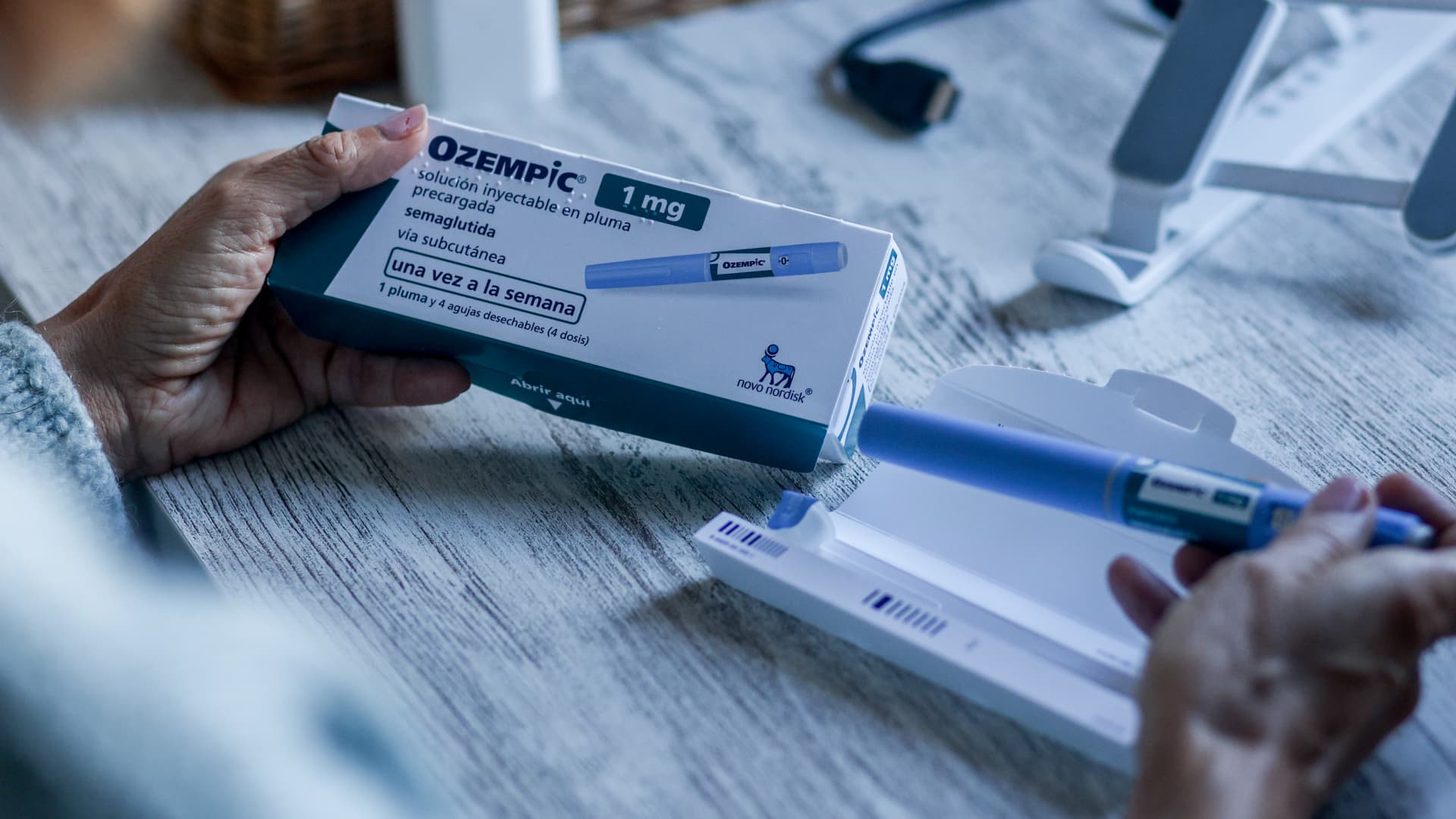
Boxes of Wegovy made by Novo Nordisk are seen at a pharmacy in London, Britain March 8, 2024.
Hollie Adams | Reuters
Demand for weight loss drugs is booming in the U.S. despite their limited insurance coverage and roughly $1,000 monthly price tags before discounts.
But some patients are willing to pay more out of pocket for those treatments than others — and that desire is strongly correlated to their annual income.
That’s according to a recent survey from Evercore ISI focused on GLP-1s, a new class of medications used to treat Type 2 diabetes and obesity. Between Jan. 24 and Feb. 20, the firm surveyed more than 600 participants who are currently taking a GLP-1, considering the therapy or have taken it in the past but no longer do.
The findings on how much patients are willing to spend underscore concerns about equity in access to the breakthrough drugs while insurance coverage is sparse.
GLP-1s include Novo Nordisk‘s blockbuster weight loss injection Wegovy and diabetes counterpart Ozempic, along with Eli Lilly’s popular weight loss treatment Zepbound and diabetes injection Mounjaro.
A monthly package of a GLP-1 costs between $900 and $1,350 before insurance and other rebates. Both Novo Nordisk and Eli Lilly have savings programs that aim to reduce out-of-pocket costs for weight loss drugs, regardless of whether a patient has commercial insurance coverage.
The majority — nearly 60% — of people surveyed with annual incomes of more than $250,000 said the maximum price they are willing to pay out of pocket for a GLP-1 is more than $300 per month.
Only about 4% of people with annual incomes of less than $75,000 said the same thing. Of that group, 64% said the maximum price they are willing to pay out of pocket for a GLP-1 is $50 per month or less.
The maximum people currently on a GLP-1 said they are willing to pay out of pocket per month was roughly in line with what they actually paid for treatment, according to the survey. The highest price respondents would accept paying skewed lower among those who used to take a GLP-1 or are thinking of taking the drug.
More than half of people currently taking a GLP-1 said they are paying a monthly price of $50 or less out of pocket. Nearly 75% of those who used to take one of the drugs said they spent the same amount.
A small share of both groups paid more than $750 out of pocket per month for a GLP-1.
The survey also asked respondents how long they stayed on the drugs.
Notably, more than 80% of those who used to take a treatment were only on a therapy for 12 months or less. Some people stopped due to cost, while others stopped a treatment because they hit their weight loss goal or experienced side effects.
That premature stoppage by some patients is one concern of certain insurers hesitant to cover them.
Still, nearly half of people who are currently taking GLP-1s said they intend to stay on the drugs permanently. Only 10% of those thinking of taking a treatment said the same thing. Of that group, more than 70% said they intend to stay on a GLP-1 until they reach their weight loss goal.
The survey also asked participants whether they would restart taking a GLP-1 if they regain weight after stopping the drug. The majority of patients across all groups — those currently on a GLP-1, thinking of it, or who used to take one — said “yes.”
Among those who used to take a GLP-1, 42% said they gained “some” weight back after stopping treatment. Around 13% said they gained most of it back, while 23% said they gained all of it back. Another 23% said they remained at a lower weight after stopping the drug.
That weight regain is consistent with what has been observed in some clinical trials on drugs such as Wegovy and Zepbound.
Another part of the survey asked participants about whether taking a GLP-1 affected their eating and drinking habits.
More than 70% of respondents reporting eating less when taking a GLP-1, regardless of whether they have pre-existing conditions. That refers to other health problems, such as diabetes, asthma or high blood pressure.
The survey finding is no surprise: GLP-1s work by mimicking a hormone produced in the gut to suppress a person’s appetite and regulate blood sugar. Some treatments, such as Zepbound, mimic more than one gut hormone.
More than half of those without preexisting conditions said they drank less alcohol when taking a GLP-1. Around 27% said the treatment had no effect on their alcohol consumption, while 22% said they abstain from drinking.
A greater share — 51% — of those with preexisting conditions said they abstain from alcohol. The remainder said they consumed less alcohol when taking a GLP-1.
Several studies have demonstrated that certain GLP-1s curb alcohol intake in rodents and monkeys. But more research is needed in humans.
— CNBC’s Gabriel Cortés contributed to this report
